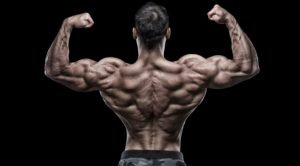Muscles of man. The main groups. Structure.
Human muscles are a popular topic for any athlete. Therefore, I think, the following material will not make for you great discoveries, because most athletes have, at least a minimum, knowledge of the structure of their musculature, but still …
If you are determined to do something, then, first of all, you need to clearly imagine what specific steps can lead you to the goal.
 Agree, one desire to increase, for example, the volume of hands is not enough. It is necessary, as a minimum, to know what exactly “to pump” for this purpose, i.e. what specific muscles need to be worked on to achieve specific goals. And the formulation of training programs, specific exercises, nutrition – this is the next steps. Therefore, the muscles of a person are one of the topics, from the study of which one should begin the hard way of an athlete.
Agree, one desire to increase, for example, the volume of hands is not enough. It is necessary, as a minimum, to know what exactly “to pump” for this purpose, i.e. what specific muscles need to be worked on to achieve specific goals. And the formulation of training programs, specific exercises, nutrition – this is the next steps. Therefore, the muscles of a person are one of the topics, from the study of which one should begin the hard way of an athlete.
The location of the human muscles is clearly shown in the figures, and their description is given below:
Until you figure out how to organize your own body, you will not fully understand the meaning of your actions in training.
There are a lot of information about skeletal muscles, I think that the muscles of a person are most clearly and rationally described in the book “The New Encyclopedia of Bodybuilding” (authors: Arnold Schwarzenegger with the participation of Bill Dobbins).
So, our body consists of more than six hundred muscles. Of course, detailed study you to anything, it will be enough to the following classification of the main muscle groups:
- Back: Largest (lateral) muscle, rhomboid muscle, subacute muscle, large round muscle, extensor muscles of the spine;
- Shoulder: deltoid muscle (consists of anterior, middle and posterior head), brachial muscle, beak-brachial muscle, trapezius muscle;
- Chest: large pectoral muscle (consists of upper and lower parts), jagged muscles of the chest, intercostal muscles;
- Biceps and triceps: biceps (upper and lower parts), triceps (three of its heads);
- Forearms (arm muscles from elbow to hand): flexor muscles of the forearm, extensor muscles of the wrist, brachial muscle;
- Hips and buttocks: quadriceps (middle, outer, inner head), thin thigh muscle, large femoral muscle, sartorius muscle, long adductor hamstrings, broad fascia thighstrider, comb muscle, hamstring muscles (biceps femoris, semimembranous muscle , semitendinous
- muscle), ilio-lumbar muscle, buttock muscles (middle and large gluteus muscles);
- Abdomen: straight abdominal muscles, external oblique abdominal muscles;
- Lower thigh: anterior tibialis muscle, gastrocnemius muscle (external and internal head), soleus muscle.
Monster: The Kali Muscle Story
After you have become acquainted with the general structure of the muscles of a person, the most rational step will be the study of the Bodybuilding: muscle section, which contains unique information about the work of muscles, the principles of their reduction, energy, etc.
Believe me, without this knowledge you will never understand how your muscles work and what makes them contract and grow!